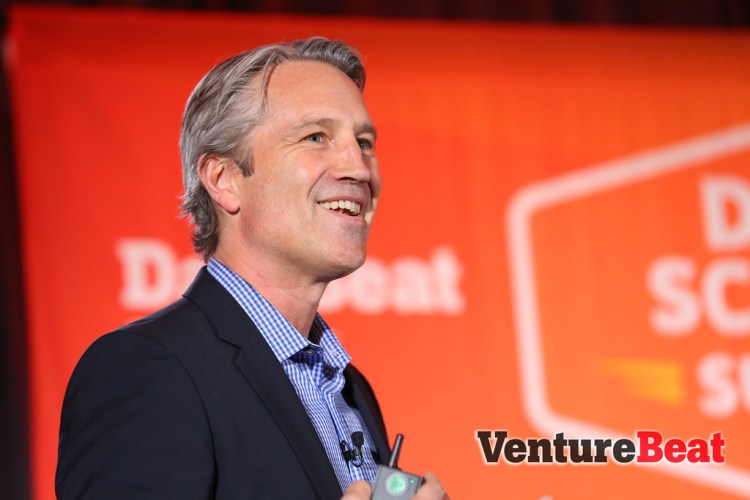Ooyala
Sean Knapp is a founder and the chief product officer for Ooyala, an online video company.
Knapp started his talk with a striking fact: The average American spends almost as much time watching TV as they do at work, he said.
That adds up to an enormous waste of time — or a huge marketing opportunity, depending on which side of the screen you’re on. But the problem is that TV broadcasters actually know little about their audience; their best information is based on Nielsen-like sampling.
That’s quickly changing, however, with the shift to online video delivery — which will in turn generate an enormous amount of data and many opportunities for media companies to optimize what they deliver to you, how many ads to show and what kind, and more.
In the next two years, 2.2 billion people will watch online video. Already, 27 percent of adults watch videos on things besides their TVs every day, Knapp said.
“We’re now collecting data from hundreds of millions of users every day, week, and month and putting it back into a system where we have to do something with it,” Knapp said. “Ultimately, the biggest opportunity that we see in the TV industry is, how do we optimize this?”
For example, Netflix recommends TV shows and movies for you to watch based on what you are actually watching — a far better and more personalized, data-driven approach than Nielsen polling.
In the future, advertisers can take advantage of similar data streams to optimize what they show you. Currently, the average hour of broadcast TV includes 16 minutes of ads, regardless of who you are or what you’re watching.
But with online video, advertisers can individualize their ads to your situation — for instance, a channel might show you no ads at all during the first hour that you watch “Breaking Bad” to help ensure that you get hooked on the show without interruption.
Ultimately, Knapp envisions a data-driven video future where “there are no channels any more … what you get is a finely tuned and personalized experience.”
Splunk
Splunk works with thousands of enterprise customers, including most of the Fortune 100 and various government agencies, to analyze and interpret their data. Chief strategy officer Stephen Sorkin narrowed the scope of his case study to “planes, trains, and automobiles.”
“We are working with Ford to build its OpenXC platform, where you collect data off cars,” he said. “You will see more of this type of offering more car manufacturers, as they measure all sorts of attributes about what the car and driver are doing. We are also using data to solve problems, like making sure telephones don’t cut out when flying over the ocean.”
Splunk’s mission is to “make machine data accessible, usable, and valuable to everyone.” This is an increasingly relevant issue with the rise of the Internet of things and advancements with connected cars — two of the hottest trends of the year.
Connected vehicles and devices can generate a tremendous amount of data, and as Dudley said before, this can turn into “exhaust” (a more apt analogy for cars, perhaps?). Splunk’s goal is to make this data actionable so the data coming from planes, trains, and automobiles is useful to both consumers and businesses.
Verizon
Ashok Srivastava said he had his dream job at NASA, before he took the position of chief data scientist at Verizon. He said his interest lies in using data and technology to create a valuable social impact.
“We have a massive network that processes 5 petabytes of data per day,” he said. “What can be done with this data to improve the public good and drive revenue for the company?”
Srivastava discussed using machine learning and real-time data to make decisions when a natural disaster strikes. He also talked about Verizon’s Precision Marketing tool, which pulls data from its massive wireless network to provide “360 degree” views on target audiences. This enables advertisers to target mobile users using criteria such as ZIP codes, demographics, and interests.
Srivastava also talked about making data a core part of strategy at a large company like Verizon.
“We are really facing a brand-new direction at the company,” he said. “We have different people with different views and observations. You have to take everyone’s opinion and meld it with your own strategy. In a company of 200,000 employees, each has a different view on how data should be used and you need to work in an agile framework.”
Additional reporting from Dylan Tweney.
VentureBeat's mission is to be a digital town square for technical decision-makers to gain knowledge about transformative enterprise technology and transact. Learn More

